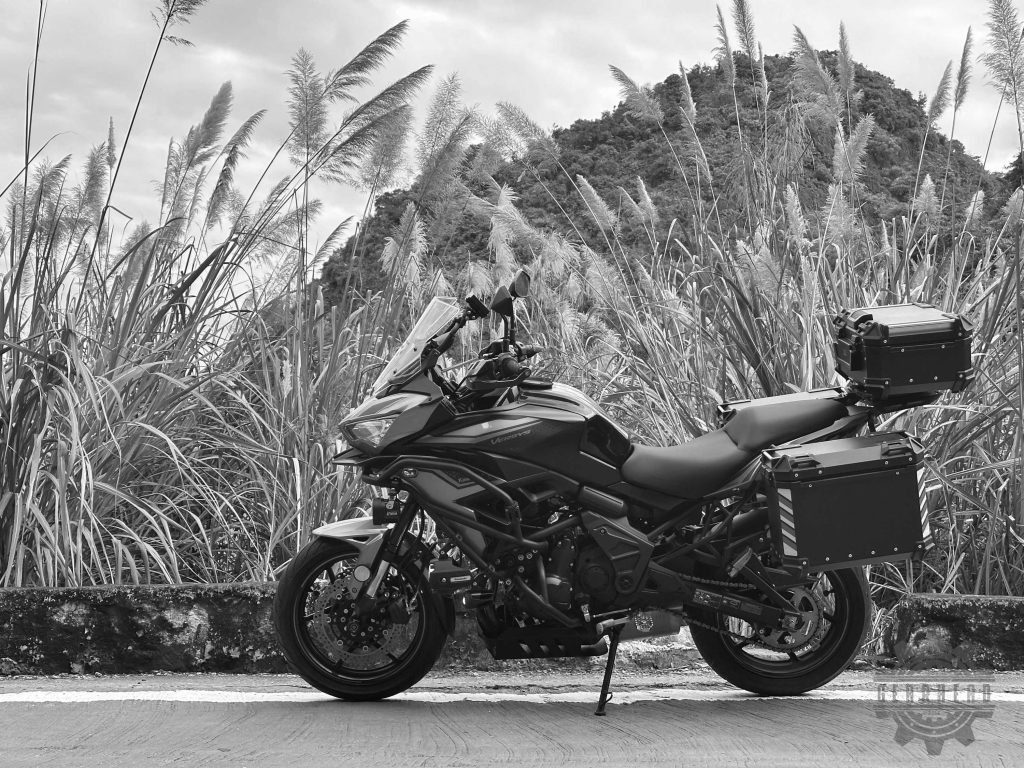After a five-year hiatus, Kawasaki Vietnam decided to import the 650 again in February/March 2023. As a result, my trusty Versys-X 300 made room for her bigger sister, the Versys 650. I had her fitted with a some accessories from from day one:

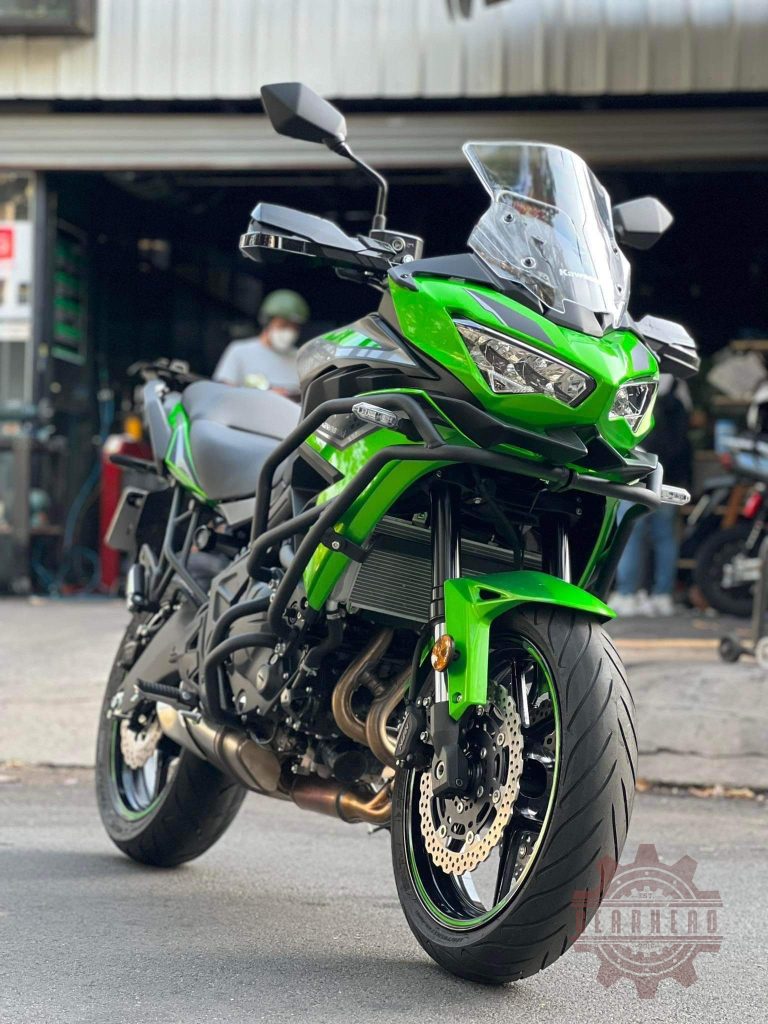
She now has about 15,000 km on the odometer and only needed routine maintenance. I have done 3 oil changes (at 1.5k, 3k and 11k km). For some reason, I went through the rear brake pads in barely 9k km, while the fronts are on their last legs now. The chain and sprockets are still in decent condition. I hope to replace them around 20k km. For more on chain maintenance, you can refer to this post: HERE)
If you want to find out what it’s like to spend a year in the seat of a Versys 650, keep reading…
What is it?
Versys stands for Versatile System. And the Versys is indeed a very versatile bike. This is not a high-tech German beast, nor an Italian beauty. This is Japanese rationality at its best.
The Versys’ design takes elements from different categories. I would say it’s a cross-breadth between a sport tourer and an adventure bike. Definitely more road-oriented than its little sister as evidenced by the 17″ cast wheels and tubeless tires. However, its long-travel suspension is definitely more compliant when you venture off the beaten track. The Versys also offers a decent ground clearance of 170mm, significantly more than my older Z1000SX’s 125mm.
While the Versys 650 has undergone significant changes in 2015 and 2021 respectively, the underpinnings haven’t really changed all that much since its inception in 2007. For instance, the engine block is still the good old 650cc parallel twin, although it’s putting out some more horses nowadays.
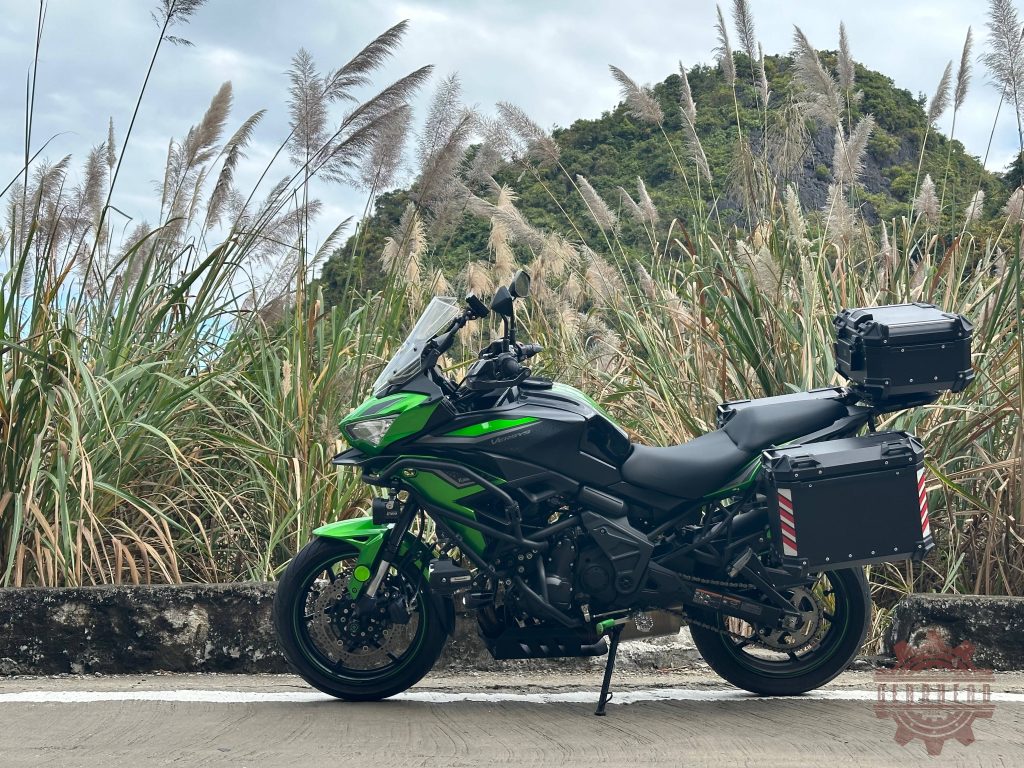
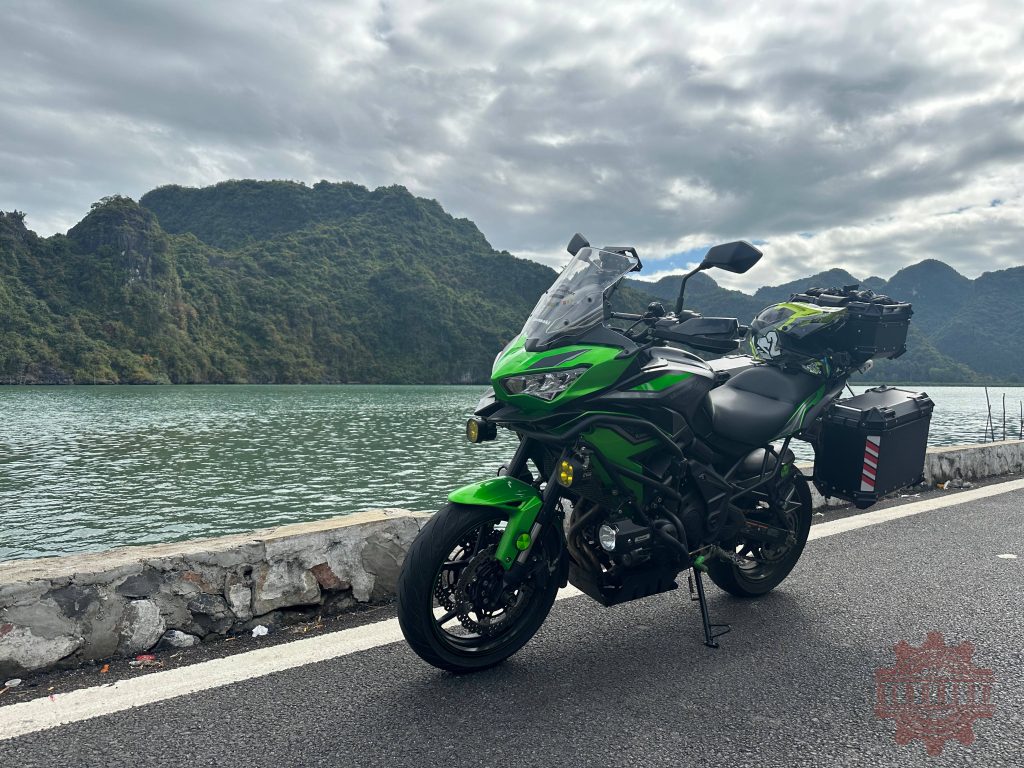
The Good…
Looks & Equipment
Kawasaki gave the 650 a long-overdue make-over in 2022. The 2022/23 model now shares its looks with her bigger sister, the 2019+ Versys 1000. And that’s a good thing. Kawasaki Vietnam only imports the Versys in “Kawasaki green”, or put in Kawasaki lingo: the “Candy Lime Green / Metallic Flat Spark Black / Metallic Spark Black” color scheme. This color combo really pops and the paint/decal quality is impeccable.
The 2022 model is packed with upgrades compared to the 2021 model, such as dual LED headlights, LED turn signals, adjustable traction control and a TFT dashboard. The latter is a sweet thing to have and it’s a huge improvement over the old analog display. Now, 4.3″ may not sound all that big, but it’s really all you need. Last but not least, it also offers Bluetooth connectivity via the “Kawasaki Rideology” app.
Ergonomics & Riding Position
I always reserve a paragraph to write about the ergonomics and the riding position, because I am particularly sensitive to them. Blame it on chronic back and neckpains.
The Versys-X 300 I previously owned had the near perfect riding position. The 650 features a similar upright riding position, except that the footpegs are located a bit higher and more backwards. This results in a more sporty and engaging riding position. I am happy with the riding position of the 650, even though the 300’s was easier on the knees.
All the controls are exactly where you expect them to be. If you’re familiar with Kawasakis, you’ll feel right at home. Kawasaki went into their parts bin and fitted the switchgear of the 2016 Z1000SX. Don’t get me wrong, this is not a bad thing. It’s definitely a step up from the 300 in terms of quality.
Engine & Ride Quality
The Versys’ twin is a high-revving parallel twin. It will rev to 10,000rpm, if you really want it to. Peak power is at 8,500rpm and peak torque at 7,000rpm, so there’s no point in revving beyond 8,000rpm. While the 296cc twin of the Versys-X 300 loved to rev, the 650 feels more at home in the mid-range. This is also where the engine sounds the best. I enjoy the engine most between 3,500rpm and 6,000rpm. Fuel economy isn’t bad at all. I average about 5L/100km, so a full tank (21L) goes a long way.
Surprisingly, the suspension setup is very similar to what I had on the Z1000SX. The front forks are fully adjustable 41-mm Showa SFF-BP (Separate Function Fork – Big Piston) forks. The rear sports a preload adjustable monoshock. This setup provides a very compliant and comfortable ride in most situations.
One of the gripes I had with the Versys- X 300 were the brakes. I am happy to report that the brakes on the 650 are up to snuff. Up front are dual 300mm rotors with dual-piston Nissin calipers, while the rear sports a beefy 250mm rotor with a single-piston Nissin caliper. Despite the modest specs, this system provides plenty of stopping power. Brake feel is miles ahead of the 300, allowing you to stop on a dime. And, of course, ABS is fitted as standard.
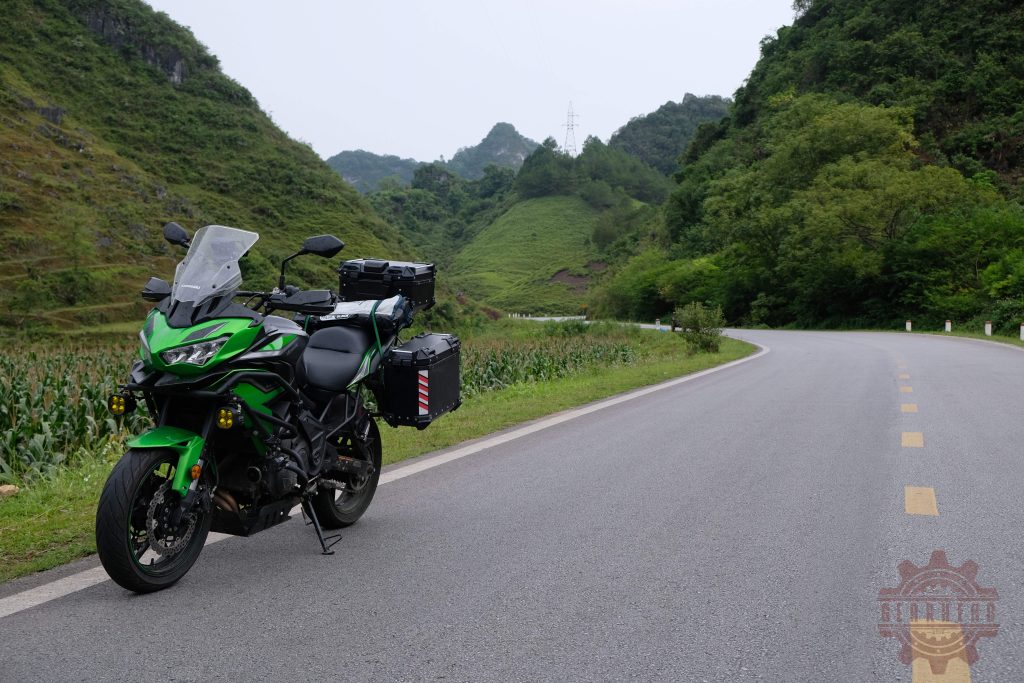
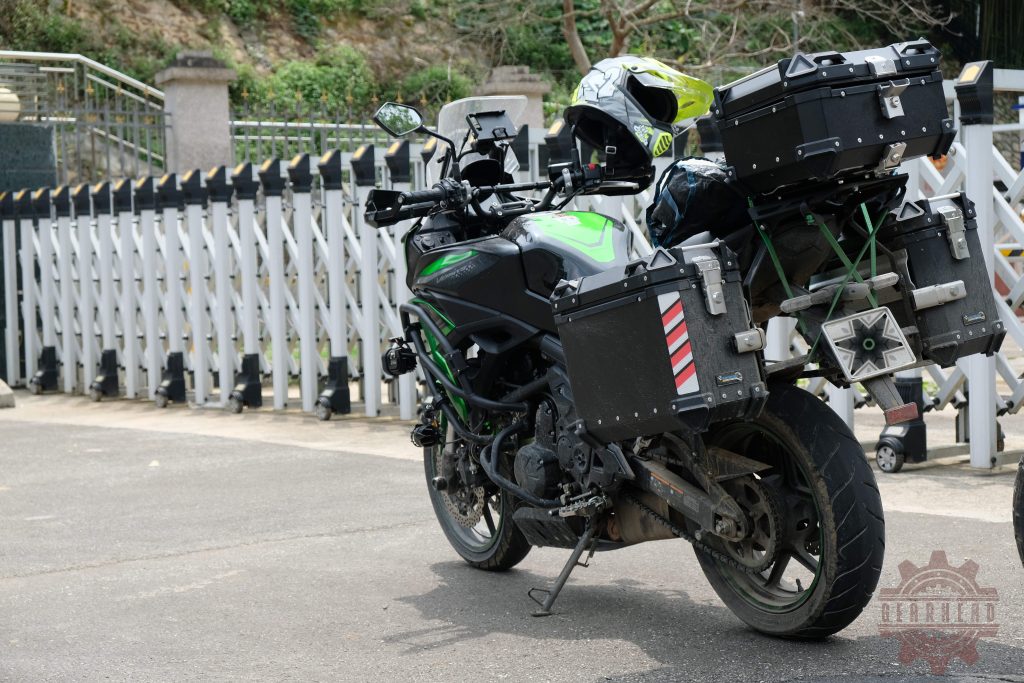
The Not-so-good…
Gearbox
The gearbox deserves a paragraph of its own. I am surprised that most reviewers don’t mention anything about the gearbox. This must be the most clunky gearbox ever. Especially when new the shifting required so much effort I thought the gearbox was faulty. Getting it into neutral required some magic too ; not pushing down hard enough and it would stay in 2nd, but push it too hard and it’d go straight into 1st… but neutral was nowhere to be found. Luckily, it got better after the break-in period, but it remains the most clunky and imprecise gearbox I’ve used so far. This came as a real surpise because the gearbox on my Z1000SX was buttery smooth.
Rattles Galore
All the Kawasakis I had owned before (Z900, Z1000SX, W650, Versys-X 300) were built like tanks and completely rattle-free. So, imagine my surprise when I discovered a whole new realm of teeth grinding sounds as from the first ride… It was very difficult to pinpoint the exact location the sounds were coming from. I ended up removing all the front fairings, and lined them with felt tape. This eliminated most of the noises and rattles. At the time of writing, I am still trying to come up with a solution to prevent the buttons on the TFT dashboard from rattling…
Minor Gripes
Here are a few in no particular order:
- No rear mudguard: This one is beyond me. My Z1000SX had one. Even the Versys-X 300 had one. Luckily, there’s a mounting hole in the rear swingarm to fit an aftermarket one. The ABS unit and rear shock adjuster are located right behind the rear wheel. You want to keep these components clean.
- Short front fender: This is an issue on most bikes. The front fender is too short to stop any dirt from slinging into the engine block, radiator, exhaust headers, etc. I installed a fender extension and was just blown away how by effective it is.
- Traction control settings auto-reset: Whatever your KTRC was before shutting the bike off, it’ll revert back to “KTRC 1” at start-up. (Note that you can only select “KTRC Off” at standstill, whereas you can toggle between “1” and “2” while riding.)
- Non-switchable ABS: This is to be expected from any mid-range road-oriented bike. Nonetheless, being able to switch off the ABS on the rear wheel would’ve been really cool.
- Dunlop D222 tires: Maybe my riding style sucks, but I am not impressed by the D222s. The Versys 650 deserves a better tire.

Conclusion
If you’re going to use the Versys primarily as a commuter, you may very well be disappointed. It’s a tall bike that carries quite a bit of weight. As a result, it has a high center of gravity which doesn’t help with low-speed manoeuvring. Another thing that doesn’t help is the gearbox (but you knew that already).
However, once out in the open is where the Versys really shines. At speed, the Versys feels weightless and the gearbox feels much smoother and precise. The engine loses it’s vibey nature above 3,000rpm, and pulls willingly up to 8,000rpm. The engine, handlebars and footpegs are all rubber-mounted to reduce vibrations. The seat isn’t perfect, but it’s the best stock Kawasaki seat I have had so far. All in all, this adds up to a very comfortable and relaxing ride.
I use the Versys for everything: commuting, traveling, carrying stuff around. Absolutely everything. And the Versys 650 is just perfect for this. Despite her imperfections, she has really grown on me. Obviously, she’s far from stock at this point. All the accessories I added also make every ride so much more enjoyable, but even from the factory this is a very decent bike. I can confidently say that this is my favorite bike to date. It’s easy to live with, packs enough punch, sounds decent and looks good.
I am looking forward to another year with her.
